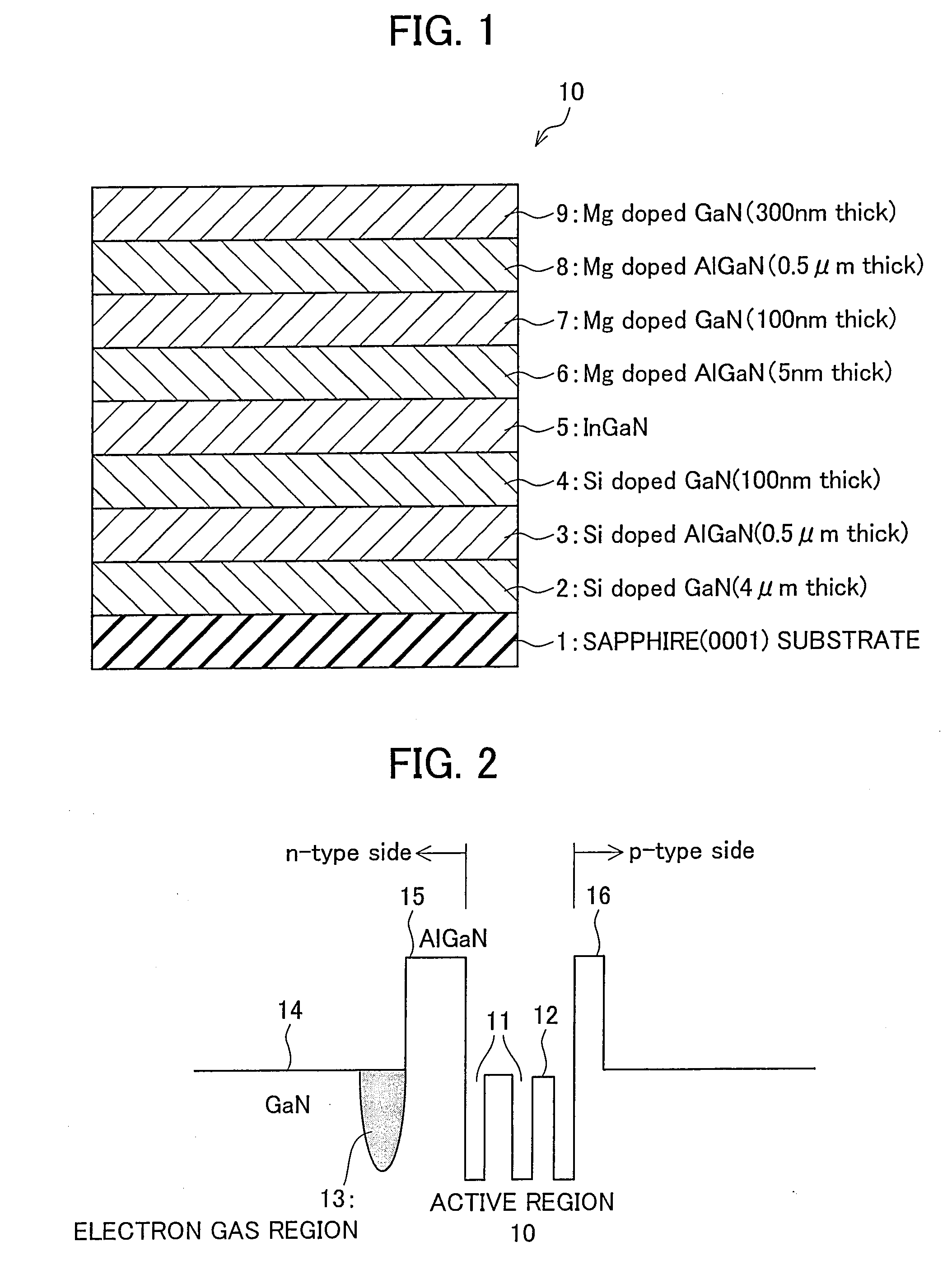A semiconductor light-emitting device, and a method of manufacture of a semiconductor device
- Summary
- Abstract
- Description
- Claims
- Application Information
AI Technical Summary
Benefits of technology
Problems solved by technology
Method used
Image
Examples
Embodiment Construction
[0062]FIG. 2 is a schematic illustration of the conduction band of a light-emitting device according to one embodiment of the present invention. The device has an active region for light emission. The active region comprises quantum well layers 11, with a barrier layer 12 being disposed between each two adjacent quantum well layers 11. FIG. 2 shows the active region as having three quantum well layers 11 and two barrier layers 12, but the invention is not limited to this specific construction of the active region.
[0063] The active region further comprises a first barrier layer 15 disposed immediately below the lowest quantum well layer 11 and a second barrier layer 16 disposed immediately above the uppermost quantum well layer 11. In the example of FIG. 2, the first and second barrier layers are each an AlGaN layer.
[0064] The portion of the device lying to the left, in FIG. 2, of the active region 10 is the n-type side of the device, and the portion of the device lying to the righ...
PUM
 Login to View More
Login to View More Abstract
Description
Claims
Application Information
 Login to View More
Login to View More - R&D
- Intellectual Property
- Life Sciences
- Materials
- Tech Scout
- Unparalleled Data Quality
- Higher Quality Content
- 60% Fewer Hallucinations
Browse by: Latest US Patents, China's latest patents, Technical Efficacy Thesaurus, Application Domain, Technology Topic, Popular Technical Reports.
© 2025 PatSnap. All rights reserved.Legal|Privacy policy|Modern Slavery Act Transparency Statement|Sitemap|About US| Contact US: help@patsnap.com



